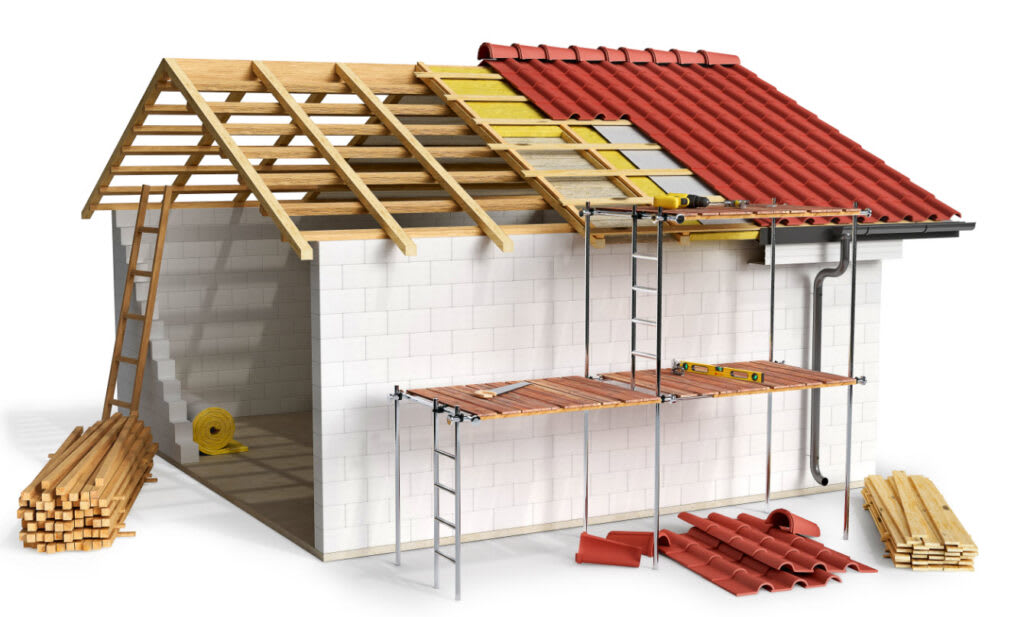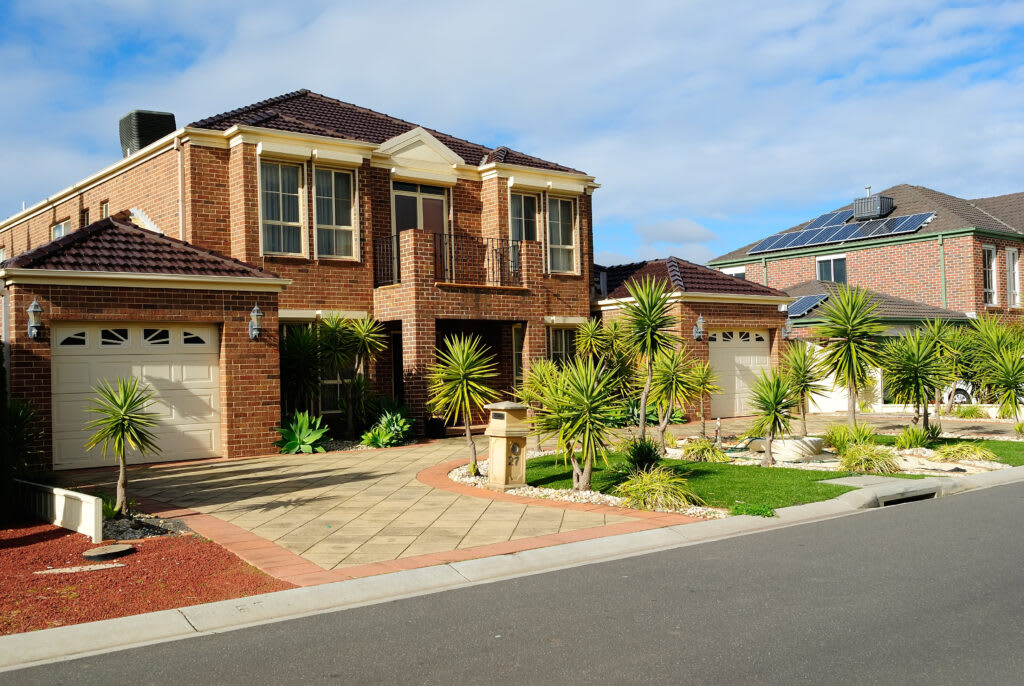Property investors learn how to claim the maximum building allowance
Let’s delve deeper into classic bricks and mortar. Or what the Government calls the Building Allowance.
The Building Allowance is a deduction that enables property investors to offset the hard construction costs of their investment property against their assessable income.
Hard construction costs may include concrete, brickwork, common property items not plant and equipment, and even excavation. This capital works deduction is allowed under Division 43 of the Income Tax Assessment Act 1997.
Whilst you can no longer claim depreciation on plant and equipment (depreciable assets) in second-hand investment properties, that’s the things like ovens, dishwashers etc.
You can claim on the structure of the building, including the bricks, concrete, windows, tiling, etc., if the residential property was built after 1987.
And these costs typically represent about 85% of the construction cost of the property.
While this may be seen as encouraging, I am determined to turn it into great news!
Until now, when you order a depreciation report, quantity surveyors give you a lump total for your building allowance, based on the Government’s guidelines that these items last approximately 40 years.
However, based on our experience, that is not true.
Investors tend to update things like kitchens and bathrooms every 20 years.
So Washington Brown has come up with the Building Allowance Maximiser report, and it’s the only one of its kind.
How much will a depreciation schedule cost me?
Get a Complimentary depreciation schedule Quote!
It splits the building allowance into different categories based on our research of what items wear and tear more quickly.
This means if you use our report when you replace those items or update them, you’ll be able to claim the total amount as an immediate tax deduction.
For example, If I bought a property 20 years ago with a kitchen that cost $10,000 to build.
Now, as it has reached the midpoint of its 40-year lifespan, I have only claimed 50% of its depreciation, totaling $5000.
When I remove it today, using Washington Brown’s new report, I’ll be able to claim the remaining 50% as an immediate tax deduction.
Many property investors are only aware of the 2.5 per cent building allowance deduction applicable to residential buildings. However, some buildings qualify for a full 4 per cent.
What makes claiming a 4 percent building allowance beneficial? Well, the higher the deduction, the less tax you have to pay.
The building allowance is one of those “non-cash deductions”. This suggests that you are not obligated to use your own money to claim it. You already did when you purchased the property.
For example – if your house was built for $250,000 and the plant and equipment was $30,000 – this leaves a Division 43 claim of $220,000. At 2.5 per cent annually, this amounts to a $5500 deduction. At the rate of 4 percent, the claim amounts to $8800 per year.
Use our free Building Allowance Calculator to determine how much you can claim today.
Property Depreciation Calculator
Find out the potential return on a property
Ways to claim the building write-off allowance
Here are four ways in which you can claim the 4 per cent building allowance:
- Purchase a residential property (e.g. house or unit) where the construction commenced between July 18, 1985, and September 15, 1987.
- Purchase a property that falls into the category of “short-term traveller accommodation” (e.g. serviced apartments) where construction commenced after February 27, 1992.
- Purchase a manufacturing building where the core activities qualify under Section 43-150 of the ITAA 1997.
- Buy a commercial, industrial, manufacturing or serviced apartment built within the “window of opportunity”. This is for any building (not residential) with a construction commencement date between August 22, 1984, and September 15, 1987.
Request a quote for your building allowance today.
Option 1 – Building Allowance Tax Deduction
Many investors target residential property between July 18, 1985, and September 15, 1987.
While this may not be a bad strategy – time is running out. Why? Well, if you do buy a property built in, say, 1986, it means that 19 years of its useful 25 years have been eaten away (from 2005 to 1986).
This means you can depreciate the residual for the next six years at 4%. This is OK for now, but the window is rapidly closing.
However, if you buy a property where construction commenced in 1988, you still have 23 years to depreciate the property at 2.5 per cent. So the amount of time you wish to keep the property is one factor to consider.
Determining the construction commencement date can be tricky. The commencement date is defined as the date the footings were poured. Local councils generally keep records of this inspection, but not always. Remember, this is an event that occurred close to 20 years ago.
It may not always practical to go to the local council and retrieve these documents whenever you are interested in a property.
Online programs such as Corelogic can give helpful information about the original settlement date of the property. Some people then work backwards one year as an approximation before approaching the local council.
Option 2 – Short term traveller accommodation Building allowance Rate
If you purchase a unit that can be defined as “short-term traveller accommodation”, you may be able to claim a 4 per cent building allowance.
ATO ID 2003/513 has provided a more precise definition of what can now be defined as short-term travellers’ accommodation. Unfortunately, it’s not good news for investors, as most serviced apartments fall back into the 2.5 per cent category. If your serviced apartment has a kitchen, you should be claiming 2.5 per cent, not the 4 per cent building allowance – unless you own 10 in the same building.
Some investors expect to receive the 4 per cent building allowance because they own a holiday home and have it fully furnished. But this type of accommodation does not fit into the category.
To be eligible, the construction must have commenced after February 27, 1992. This type of investment generally has the highest depreciation claim as a proportion of the purchase price. This is partly on account of the higher building allowance and because these types of investments have more plants and equipment. They generally have lifts and pools and also are often fully furnished.
But a high depreciation schedule does not necessarily make a good investment. Many people have been burnt in the past buying these types of investments based upon the available tax deductions.
Claim the building allowance today with a property depreciation schedule quote
Option 3 – Industrial Building allowance
Purchase a building that qualifies under the industrial activities of s43-150 of the ITAA 1997. According to s43-150, certain core activities will be eligible for the industrial building for a 4 per cent write-off.
But not all industrial buildings qualify. More than likely, if you have purchased a single factory in a complex of 50 factory units, it’s unlikely your building will be eligible.
However, it might qualify if your building is refining petroleum, freezing primary products, printing, canning or bottling.
Other operations that qualify include buildings in which items are brought in or maintained in the condition they are sold. For instance, recently, we claimed this allowance for a major car manufacturer on the property where its vehicles were serviced.
Learn more about Industrial Warehouse Depreciation
Option 4 – Window of Opportunity Building Depreciation Allowance
Option 4 refers to the “window of opportunity” – from August 22, 1984, to September 15, 1987.
A building allowance is a tool the Government can use to stimulate economic growth. The stimulation must have been high on the agenda during this period, as any non-residential building that commenced construction qualifies. This is the only period where an office building or suite qualifies for the 4 per cent allowance.

Any downside?
Certainly there should be some downside in claiming the 4 per cent building allowance? Well, there’s no such thing as a free lunch.
One downside – any amount claimed under Division 43 will need to be factored in when calculating your capital gains tax liability. This rule generally applies to assets acquired after July 1, 1997.
But it’s still worth the exercise, especially for higher-income earners, under the principle of “a dollar today is better than a dollar tomorrow”, coupled with the CGT relief allowed.
You should always seek professional advice when claiming depreciation in your financial year’s tax return.


